Roasting is an indirect dry heat cooking method. Basically, the meat is cooked at a high temperature for a bit to acquire a crust, then the temperature is reduced and the meat is cooked from the inside for longer.
All types of meat are suitable for roasting. It's a great way to tenderize tough meats and bring out the flavor and aroma of lean meat. We'll introduce you to the basics of grilling, as well as how to roast different types of meat.
Basics of roasting different types of meat
Decide what you will roast the meat in
Baking in a convection oven is considered the main method, since such an oven circulates air, which slightly speeds up the baking process. Any meat in a convection oven will cook a little faster. Although most often meat is baked in a convection oven, it can be done in different ways:
- The most common method of roasting meat is cooking in a closed convection oven. The meat is roasted on a rack or tray in the middle at a temperature of 138-204˚C. Lean meats should be cooked less at a higher temperature, while fatty ones will cook more quickly at a lower temperature;
- Electric ovens or wood ovens can reach very high temperatures. They are used for very fast roasting of meat. In some regions, this is a fairly common way of preparing meat in restaurants: it is quickly roasted at a temperature of 260˚C or 315˚C and the result is very juicy meat with a crispy crust;
Barbecues, grills or smokehouses can be used to roast meat outdoors or, as it is often called, smoking. This process involves cooking meat for a long time at a low temperature over indirect heat. For this method, you must have coal to heat. Often pork meat is roasted this way.
Choose a vessel to cook the meat in
The meat should be placed in a suitable tray where all the juice will drain. It is important that it does not fall on the heat source. Deep baking trays are most often used, but different types of meat should be baked in different trays. If you don't have any, you can buy disposable trays from any supermarket or make your own from foil.
- In a deep baking tray roast beef, poultry, lamb and any other meat that you roast on top of vegetables. If the lower part of the meat does not brown, it is easiest to roast it in a deep tray;
- To brown the meat on all sides, you can roast it on a wire rack. Meats such as lamb are usually roasted this way so that they can rest comfortably on the rack and the juices drip onto the roasting tray. This is an amazing roasting method to collect the juices from the meat for Gravy Sauce;
- The skewer is often used to cook chicken, which is constantly turned to roast evenly. Although meat is not usually cooked this way at home, you can sometimes find small grills for one chicken for home cooking.
Allow the meat to reach room temperature before roasting
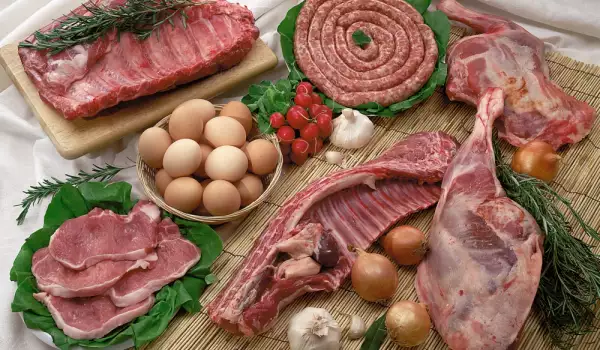
Chicken and other large cuts of meat you plan to roast should be placed on the kitchen counter several hours before placing them in the oven to allow the meat to reach room temperature. This is to ensure that the meat cooks evenly and you don't end up with a large piece of meat that is browned on the outside and almost raw on the inside. Putting the meat directly from the refrigerator into a heated oven will, first, heat it up, but the middle will remain cold. It is very difficult to properly cook meat without first bringing it to room temperature. Always defrost frozen meat thoroughly in the refrigerator before attempting to cook it. Allow it to warm up to room temperature.
Roast the meat uncovered
In order to get a crispy crust, the meat usually does not need to be covered throughout the cooking process. After removing it from the oven, cover it and let it cool before slicing. Covering the meat while roasting can make it juicier or more tender, but this can also be achieved by proper preparation. It is also important not to pour liquid on the bottom of the baking tray, so that the meat does not dry out. This is called braising and is an effective cooking technique on its own, but should not be used when roasting meat.
Start roasting the meat at a high temperature and then reduce it
Different types of meat are cooked at different temperatures from approximately 138˚C to 204˚C, depending on the dish you are preparing and the size of the meat. But generally the meat is roasted at a higher temperature for 15-20 minutes, then it is lowered to 177-191˚C and the meat is roasted for several hours.
Tender meats such as fillet should be cooked at a high temperature throughout. This process takes less time. Such meat will not benefit from long low-temperature cooking, which helps tenderize tougher meats such as pork shoulder.
Always preheat the oven before placing meat in the oven. It is not necessary to heat the meat gradually - it should be placed in an already heated oven. This will help the meat cook more evenly and keep it juicy. That way, you'll know for sure that you're doing everything right.
Allow the meat to cool after roasting
Meat consists of tightly bound protein fibers that release water when the temperature rises. It mixes with the fat that the meat gives off when heated, and thus an aromatic juice is formed, which reveals the incredible taste of the meat. If you immediately cut a very hot piece of meat, those juices will immediately flow onto the plate. If you let the meat rest at a lower temperature and cover it for 10-20 minutes, it will absorb the juices and flavor better. Therefore, all types of meat, especially beef and poultry, should be left for a while after cooking.
Method
How to roast beef and other red meats

Choose the correct piece of meat. There should be enough fat to melt in the oven and add flavor and aroma to the meat. Also, this fat can be a good sauce base. Look for fresh pink meat with no grayish spots with well-marbled fat. The most common of these parts include:
- back part;
- fillet;
- thigh;
- neck, scapula;
- loin.
Add simple beef seasonings. You can flavor the meat with fancy spices or marinade, but beef is best with the simplest of spices. Add the spices as soon as the meat reaches room temperature before placing it in the oven. Drizzle generously with oil (sunflower or your favorite). Butter is also good for giving the meat a delicious crispy crust. Season the meat with salt and black pepper on all sides. Gently rub the salt into the meat so that it sticks to the surface.
Roast the meat on baking paper or on chopped vegetables. The best way to roast beef is to cook it in a deep tray covered with seasonal vegetables. The fat that drains from the meat will help cook the vegetables and give them an amazing flavor and aroma. If you want to strain it, it makes a great sauce base. You can also serve the vegetables as a side dish.
To shape the roast meat, you can braid it. Sometimes oblong or stuffed cuts of meat are tied with kitchen twine to give them an even shape and cook more evenly. This doesn't have to be done with all cuts of meat, but if you're making a meat roll you'll probably need to tie it before roasting.
Before roasting, you can seal the meat in a pan. Instead of roasting beef at a high temperature and then at a low temperature, it is often first pan-fried and then oven-roasted (like a steak). To sear the meat, heat the oil in a cast-iron pan over high heat.
As soon as the oil starts to evaporate, put the meat in the pan. It should sizzle immediately. Otherwise, remove the meat and wait some more. Fry the meat on all sides, then place it on baking tray lined with baking paper and place it in the oven. Do not remove or discard the fat from the meat you are going to roast. It will melt and add great flavor to the vegetables.
Roast the beef at 163°C for 30 minutes per 450g. Different sized pieces will take different times, but a standard rule of thumb is 30 minutes per 450g. If using a meat thermometer, remove the beef from the oven when it is a few degrees below desired. Below is the level of doneness of the meat according to its temperature. It is believed that the tastiest beef is semi-roasted, but cook it as you like.
- Semi-cooked meat has a temperature of 54-57°C, and the inside should have a bright red (close to purple) color. Such meat should be very tender and juicy;
- Lightly roasted meat has a temperature of 54-57˚C. It should be slightly brighter, redder and warmer than undercooked meat;
- Meat with a medium degree of roasting should have a temperature of 57-63˚С. It has a bright pink color and is less juicy than lightly fried meat;
- Well-done meat has a temperature of 63-68˚C. It is quite tough and toasted on the inside;
- Deep-roasted meat has a temperature above 68°C. It should be tough and dark in color outside and inside. Generally not recommended.
Cover the meat and let it rest for 10-15 minutes. When the meat is almost at the desired temperature, remove it from the oven and remove it from the baking tray. Place it on a board or plate and cover it with aluminum foil. While the meat is resting, it will continue to cook. The temperature will drop slightly and will be perfect. Cut the meat into thick slices so that it does not cool down quickly. The cuts should be generous, especially if the meat is undercooked - at least 2 cm thick.
The methods for roasting beef can also be applied to pork.
How to roast pork
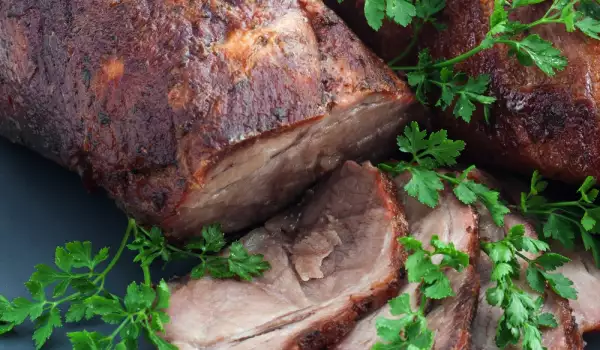
Only high quality young pork is suitable for roasting. It features a pale pink base with a slightly matte finish and white fat streaks. If they are yellow, it is meat from an old animal. It is not cooked soft and juicy. You can store fresh fillet in the fridge for no more than two days, frozen meat - five days, in the freezer - up to six months.
To make pork dishes tender and aromatic in the oven, the meat is marinated in advance and then roasted. Which marinade is best for roasting pork in the oven:
- dry white or red wine (can be diluted with an equal amount of mineral water);
- lemon juice with wine vinegar or kiwi slices;
- kefir or unsweetened yogurt;
- beer;
- vodka with mineral water and soy sauce.
After cold marinating, the semi-finished product must be warmed to room temperature before being placed in the oven. Otherwise, the middle part of the vessel will be moist. You can roast aromatic pork without marinating. But it must be salted shortly before the end of cooking, otherwise the meat will be raw.
A specific type of pork is used for each recipe. Leg, fillet, neck, shoulder and back are ideal for roasting. There are many options for cooking pork in the oven. But they are all divided into two groups - roasting as a large whole piece or in small slices.
There are several nuances of cooking a whole piece of pork:
- If there is lean meat, it should be marinated. Alternatively, you can fill it with lard. Or combine the two processes;
- When cooking in a special mold, do not cover it with a lid. Then the meat will have an appetizing crust;
- For cooking in foil or a bag, the ideal temperature is 180°C. Without "wrapping" - 200-220°C for the first quarter of an hour and 160-180°C after that.
How long pork is roasted in the oven in foil, in a bag or in a mold depends on the cooking method and the size of the piece. A large piece in a bag will take about an hour and a half, and half an hour will be enough for pork chops. Readiness is easily determined: just pierce the crust with a knife. If the juice is clear, without a pink tint, the meat delicacy can be taken out and served to relatives and guests.
How to roast lamb
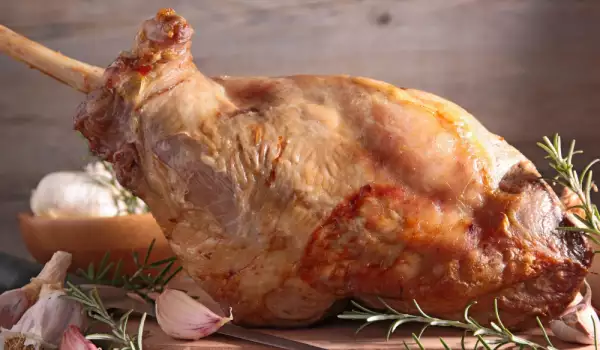
It is best to roast lamb leg or lamb shoulder. Good meat has an even pink color. The smell should not be too strong. The fat of high-quality lamb is firm and the skin is elastic.
What to do with the smell of the lamb? To remove the unpleasant smell, you can remove its source - fat and veins. Another solution is to soak the meat in wine or kefir for at least two hours.
What spices are suitable for roast lamb? Choose the spices to your taste from this list: allspice, basil, coriander, paprika, savory herb, spearmint, etc. If you have experience mixing spices, create your own blend. When roasting a shoulder, you can stuff the meat with onions, garlic and fresh spices. Leave it to marinate for 2 hours at room temperature or overnight in the refrigerator.
Before roasting, you can seal the meat on all sides in a pan with vegetable oil.
You can roast it under foil. Preheat the oven to 140°C. Put the lamb in a tray, cover it with foil and roast at a low temperature for 1.5-2 hours. Then heat it to 180°C, remove the foil and place it back in the oven for 15 minutes. Allow the meat to cool slightly and cut it into thin slices, cover it with the separated juice. If there is a lot of juice, you can thicken it on the stove by adding a teaspoon of cornstarch. Serve it as a lamb sauce or side dish. On top you can add coriander, parsley, freshly ground black pepper.
You can roast the lamb in a tray with vegetables, with rice, rice and dock, bulgur, etc. If you add water into the tray, you don't need to cover it with foil. Another way is to use a baking rack. Place a wide tray under it, the fat and juices will drain into it. The meat will be tasty and tender.
How to roast chicken and other poultry meat
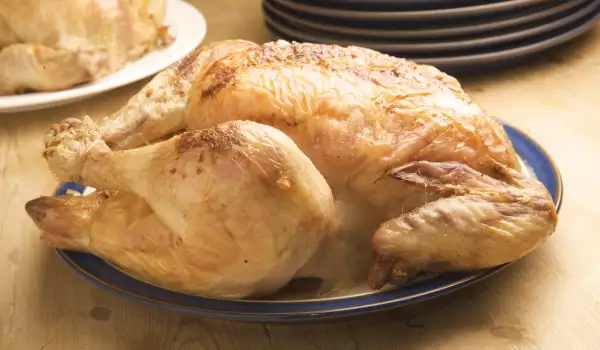
Roasting a whole bird is the best way to roast chicken, turkey and other poultry. You will need a minimum of preparation and you will get a maximum result. This is the best way to roast a juicy and flavorful chicken in the oven. For roasting, you can buy 1.4-2.3 kg of chicken. It's perfect for dinner. You won't need to cut or split it before roasting the chicken.
Salt or marinate the chicken:
- Can be flavored with simple spices and roasted in the oven with minimal effort. But if you marinate the chicken for a few hours or the night before roasting, it will be even tastier. Before marinating it, make cuts with a knife on the breast, thighs and all the rest of the chicken on all sides. Pierce the meat with the tip so that the knife reaches the bone. Thus, not only the skin is marinated, but also the meat inside;
- Easy French way to roast chicken: Take two lemons, a head of garlic, some fresh thyme, salt and black pepper. Squeeze the juice from the lemons into a bowl and cut the clove garlic in two. Add spices (sage, rosemary or other spicy herbs) and place the chicken in a bowl, breast side down, for several hours. Put in the fridge. Before roasting, stuff the chicken with lemons, garlic and herbs;
- To brine the chicken, soak it in a mixture of warm water, sugar and salt overnight to flavor the meat with the juices and flavor. Drain the chicken well before roasting;
- Sprinkle the spices on the inside and outside of the chicken. Even if you have marinated the chicken, it does not hurt to salt and sprinkle it with black pepper generously inside and out. This is how you flavor the meat from all sides and reveal its flavor to the maximum. All the meat will be saturated with salt as it will release juice.
Before roasting, tie the legs of the chicken with twine. This will help it cook evenly and keep all the stuffing (if any) inside. If the legs are not tied, they will cook faster and dry out.
Bake the chicken in a deep baking pan. Like beef, poultry is usually best roasted with seasonal vegetables like onions and carrots. Coarsely chop the vegetables you like, put them at the bottom of the baking tray and place the chicken on top of them.
Do not roast the chicken in a baking bag. Chicken in a bag is very juicy, but it loses a lot of the flavor it would have with conventional roasting. Take your time and do it right.
Start roasting the chicken at 218°C. Poultry should always be started at a higher temperature, then reduced to 177°C and roasted for 20 minutes per 450g plus a further 15 minutes. In a convection oven, poultry is cooked a little faster. Roasting a single turkey, especially a large one, may take a little longer.
If you like, you can baste the poultry while it's cooking, but it's not necessary. The best way to cook a juicy chicken is to not overcook it and leave it after cooking.
If using a meat thermometer, check the temperature of the thighs and breasts. The finished leg should be at 82°C and the breast at 71°C.
To check the readiness of the chicken, pay attention to the juice. It is easiest to take a knife and stick it in the part between the thigh and the bottom of the breast. A clear juice should come out. If it's pink or cloudy, the chicken isn't ready yet.
You can use the same rules for roasting rabbit, lamb and other tender meats.
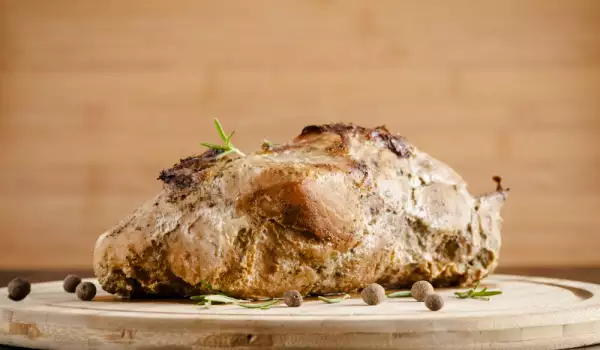
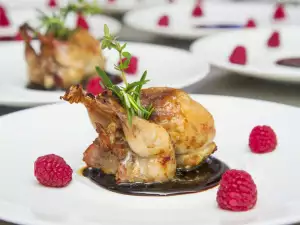
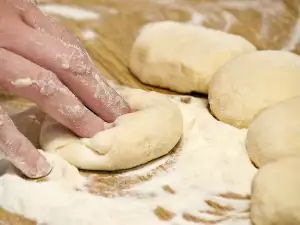
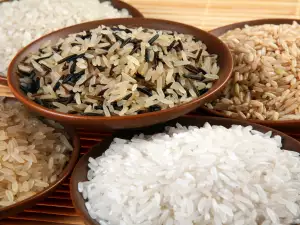
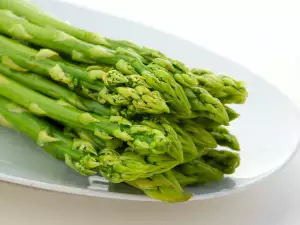
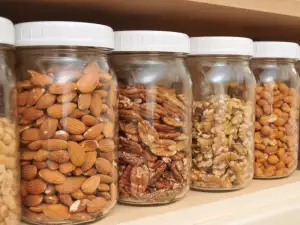
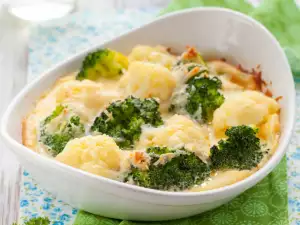
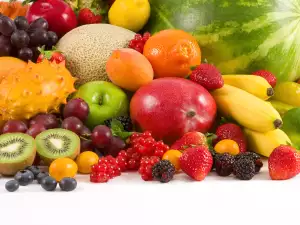
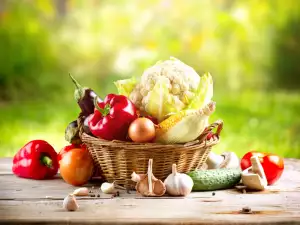
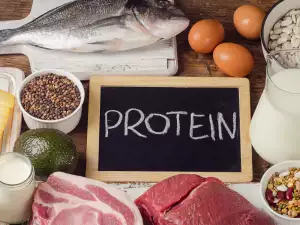
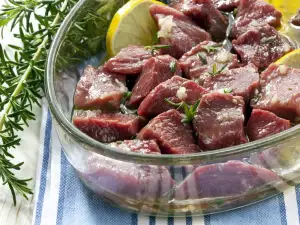

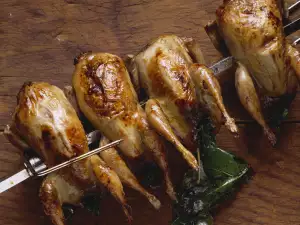
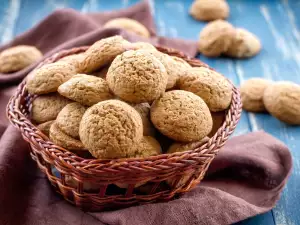
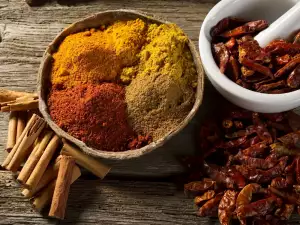





Comments